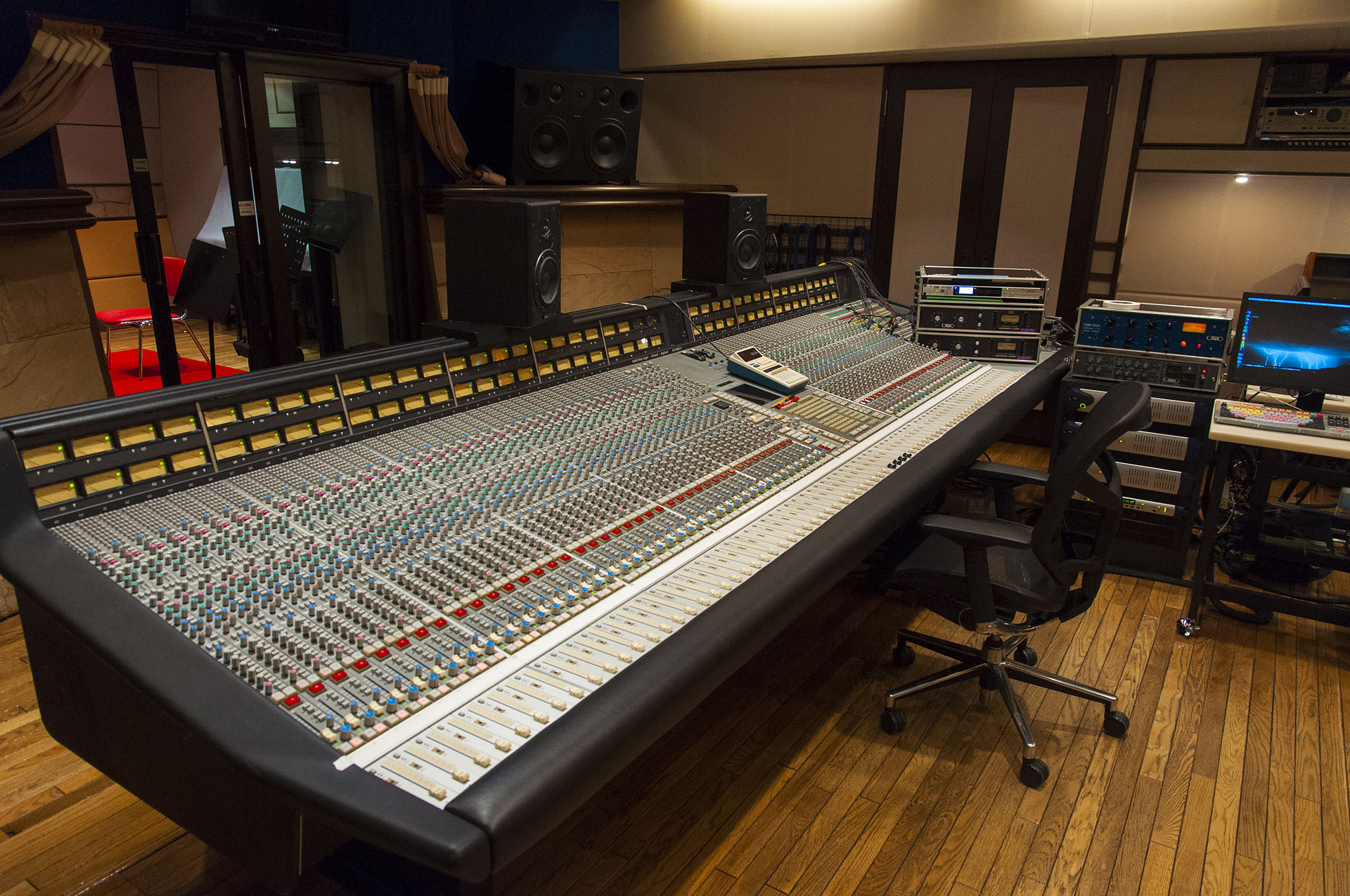(Solid State Logic SL4064G+ 2010)
The Mixing Process
Background
As outlined in my Pre-Production Plan (Page 2010) blog several months ago, lets return to the basics. It is the goal of the audio industry to facilitate to the realisation of recorded artefacts – recorded and then distributed in the mediums of shellac or vinyl records, magnetic tapes, compact discs and now more commonly as wav or MP3s. Within the process of producing these artefacts, there are considered to be three stages of the production process:
-
The pre-production stage;
-
The production stage;
-
The post-production stage.
Whilst there are blurred lines between several of these stages depending upon what musical style (genre) one is working within, the acoustic style recording process essentially adheres to the following three stages:
-
The pre-production stage is about planning for the production of the artefact
-
The production stage is the actual recording process of the artefact. This process is commonly referred to as the tracking
-
The post-production stage follows the tracking stage, preparing each track so that it is well balanced in terms of instrumentation, levels, frequency and dynamics – in preparation for the final step of this stage – the mastering process – prior to the artefact being released to the public
At the heart of the production lies the actual reason for the artefact – the song or composition. This focus – the main reason for the production process – needs to be maintained throughout the creation of the artefact process. It must not become secondary to the process. It is often said that that to make a great song, you need to have:
-
a great song;
-
great instrumentation;
-
a great performance;
-
a great recording;
-
a great mix;
-
and great mastering.
Step 1: the artist creates a song in terms of melody, harmony, rhythm, counterpoint melodies, counter-point rhythms and instrumentation – creativity following both technical and musical theory guidelines. This is then practiced and adjusted or moulded as required.
Step 2: the song then needs to be arranged, with appropriate instrumentation relative to the musical style (genre) of the song.
Step 3: once the song is considered to be finished, it needs to be recorded. An essential aspect of the production process is the performance of the musicians used in the tracking process. If the musicians are both technically proficient and aesthetically sensitive, then there is hope that the song could be captured as the songwriter or composer had intended the song to be. A great song needs to be performed in the best possible way in order for that song to stand and be considered as it was intended.
Step 4: Whilst there are a number of approaches to the recording process, one usual approach is to capture the instruments as they were intended to sound. In this recording approach, the recording process is fundamentally a technical process; with the recording objective being to capture the song as close to as possible the pure or natural sound or tone of the instrumentation being recorded. In this recording approach, whilst some creativity can be used to get pre-desired effects, recording is fundamentally a technical process to capture the pure or natural sound or tone as being played. Note: if your offer to an artist is ‘to record them’, then this is the step at which you provide them whatever assets you have as a result of the recording, or production process. To go to the next step is to provide them ‘a mixed song = a produced song’, an entirely more complex and time consuming process…
Step 5: Once this recording, or production process is complete – ie not further recording is required – the song needs to be mixed.

The Mixing Process
It is the role of the mixing engineer to take all of the recorded tracks and commit each of them to a final mixdown, in order to realise the pre-agreed qualities of the required end goal – the sum total of these tracks as being part of the cultural production artefact – in a balanced manner. This is the goal – the target – of mixing.
Mixing involves working on each track independently. Mixing is a constructive, engineering process, considering each of the recorded sound source elements – usually, but not necessarily, the instruments – that have been captured to tape as part of the tracking process. As outlined by Ownsinski (2013), the mixing process includes adjusting the amplitude levels and panning each instrument within each of these tracks, allowing each instrument to be heard within the balance of the mix – to sit within its own space – spectrally and dynamically. The mixing engineer usually also adds processing – sonic and automation –to the recorded process to embellish the tracks sonically and musically.
The mixing process therefore is both a technical and a creative process.
The mixing process is considered to be a technical process in terms of any auditory or sonic corrections required from the recording (tracking) process. This is usually required if for any reason there are deficiencies in either the recording or performance equipment; or the tracking or performance process. A mix engineer may assess the recorded assets as being deficient in either amplitude, their stereo position, or the actual recorded frequency range of the particular instruments.
The mixing process is considered to be a creative process as the mix engineer can influence the final tracks, by determining the relationship between multiple musical and sonic captured sound sources within the one track. Moylan (1992) agrees mixing is both a technical and an aesthetic process. Mixing requires the creation of a sound stage – width, depth and height – that is both congruent to the genre, but also allows the mix engineer to transport the listener to a land that they imagine, an environment that is congruent for the artist and the cultural production to exist. A good mixing engineer arranges the sound sources in a way that creates moments of interest for the listener, that engages them without them necessarily being conscious of the manipulation. Sometimes the mixing engineer may decide it is necessary to take what could have been a pure or natural sound or tone, and dress it up for the desired outcome – usually, for an audience’s entertainment. The degree of dress up used by a mixing engineer should be guided by the pre-agreed qualities of the required end goal; but often an experienced mix engineer is recruited for their experience and creativity. In this case, they will use techniques to create a soundscape – breadth, height, depth and dynamics -, along with a range of processing and automation techniques to add colour, interest, texture, space to highlight the existing or original song hooks, and also to add a range of extra hooks. There are after all, many options in the creative process.
However, as mixing involves working towards an end-goal of a cultural production where all of the sounds and tracks work as a homogenous whole, it is important that the mix engineer progressively builds a mix to a pre-agreed aesthetic. In order to facilitate this process, it is necessary to use a reference track to guide all of the participants in the production process at every step of the process. This reference track will suggest what type of song they are producing, the musical style (genre), the balance of what the finished tracks should become, and the degree of production creativity that it appropriate to include in the particular track. The pre-agreed reference track is especially important within the mixing stage. The mixing engineer will use a reference track – a track that they can make reference to regarding the overall balance of the desired artefact – as an agreement with the person directing the production process (known as key stakeholder – possibly the song-writer, artist, manager or record label owner) – of what this end-goal, the cultural production will sound similar to, musical style-wise, musically and sonically.
It is intended for this blog to continue in a series of Mixing blogs here (Page 2014).
References
Izhaki, Roey. 2013. Mixing audio: concepts, practices and tools. 3rd ed. Oxford: Focal.
Moylan, William. 1992. The art of recording: the creative resources of music production and audio. NY: Kluwer Academic Pub.
Owsinski, B 2013 Modern Mixing Techniques, Cengage Learning, Inc USA
Page, David L. 2014. Mixing Part 6 Accessed 19th May, 2014
Page, David L. 2010. Pre-Production Plan – Part 1 Accessed 10th December 2010
Roback, Steven. 2004. Pro-tools 6 for macs. NY: Peachpit Press
Senior, Mike. 2011. Mixing secrets for the small studio. Oxford: Focal Press.
Target image courtesy of: http://www.clipartpanda.com/clipart_images/target-skills-53658831 Accessed 12th May 2014
Solid State Logic SL4064G+ image courtesy of: SSL 4064 Accessed 10th December 2010
– ©David L Page 15/12/2010
– updated ©David L Page 10/04/2013
– updated ©David L Page 14/05/2014
Copyright: No aspect of the content of this blog or blog site is to be reprinted or used within any practice without strict permission directly from David L Page.



